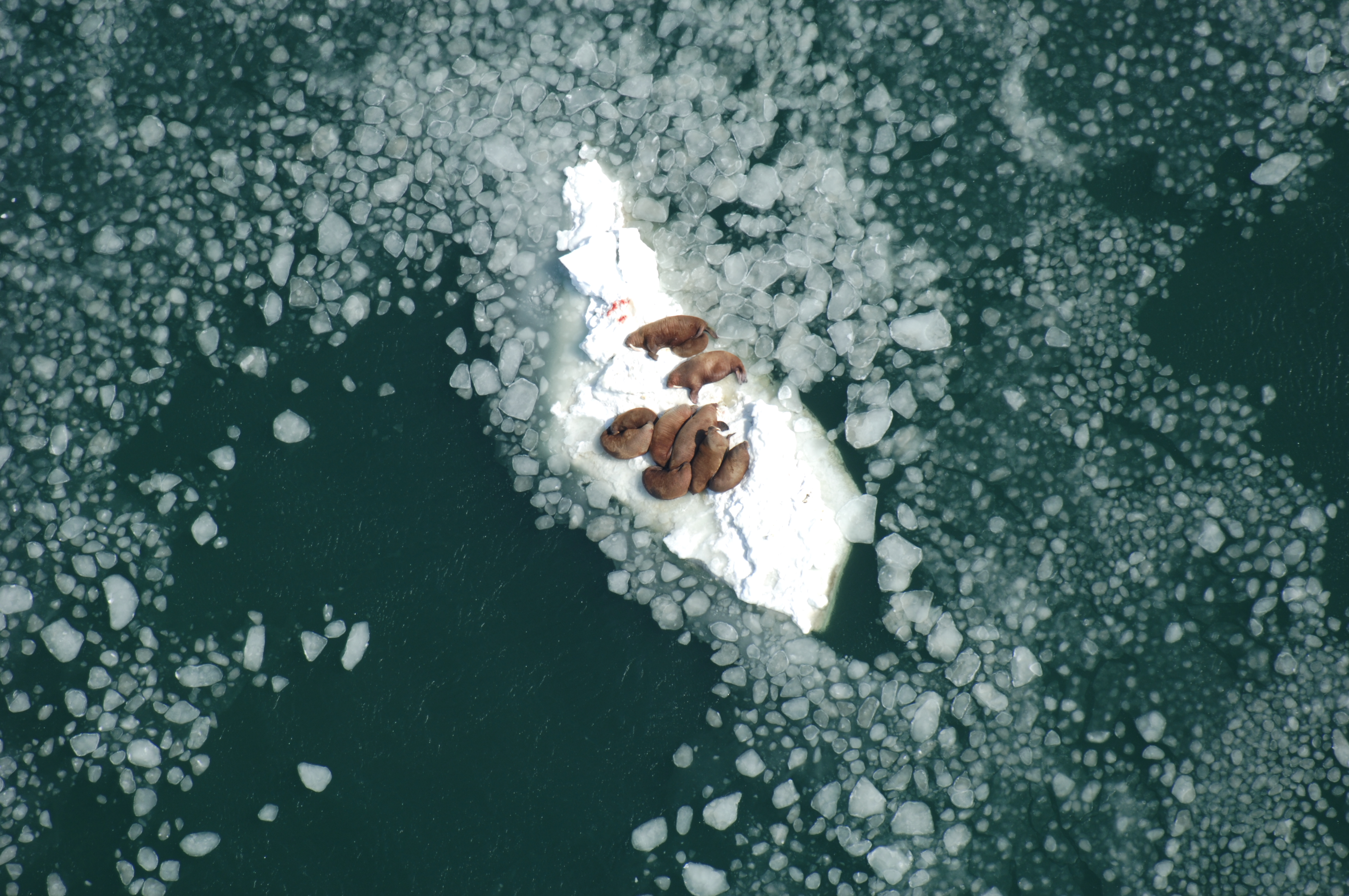How you can help scientists track Arctic walrus populations from space
A new program from the British Antarctic Survey and World Wildlife Fund aims to enlist volunteers to identify Atlantic and Laptev walruses from satellite photos.

The walruses that live in the Atlantic portion of the Arctic Ocean and in Russia’s Laptev Sea are elusive and mysterious. Their habitat is remote, they spend a lot of time underwater, they ride on ice floes that can drift long distances and when they do go on land, they crowd tightly together. All that makes counting them difficult.
Now scientists trying to understand the status of the populations are looking to outer space for help in getting a more accurate count — and also, to the public.
The British Antarctic Survey and World Wildlife Fund have teamed up to create what they’ve dubbed the Walrus From Space program. They are collecting satellite imagery of Laptev and Atlantic walrus habitat and seeking to enlist thousands of citizen scientists over five years to examine those images for signs of the animals.
[Where’s Wally? The wandering celebrity walrus is spotted in Iceland]
Satellite imagery, scientists hope, will help produce a more accurate census than what has been possible through more traditional work in the region.
“Assessing walrus populations by traditional methods is very difficult as they live in extremely remote areas, spend much of their time on the sea ice and move around a lot. Satellite images can solve this problem as they can survey huge tracts of coastline to assess where walrus are and help us count the ones that we find,” Hannah Cubaynes, a British Antarctic Survey wildlife research associate, said in a statement.
Participants who register for the program will receive training to decipher the images and discern the spots that are walruses.
Walruses throughout the Arctic are contending with the loss of sea ice caused by climate change. Participating in the Walrus From Space program is a way that citizens can address the problem, Rob Downie, chief WWF polar adviser, said in the British Antarctic Survey statement.
“It’s easy to feel powerless in the face of the climate and nature emergency, but this project enables individuals to take action to understand a species threatened by the climate crisis, and to help safeguard their future,” Downie said.
Atlantic walruses, which range from eastern Canada to western Russia, are classified on the IUCN Red List of Threatened Species as “near threatened.” Estimates of the population size vary; the IUCN cites a 2015 estimate of 12,500 mature adults, and the WWF puts the total population estimate at 25,000.
Information about the Laptev walrus population is even more scarce. The WWF has a rough population estimate of 5,000. There is scientific debate about whether the Laptev population is distinct or, in the alternative, the westernmost segment of the Pacific walrus population that lives in waters off Alaska and eastern Russia, according to the IUCN.
[Scientists find a record number of Atlantic walruses in the Russian Arctic]
There has also been uncertainty about the Pacific walrus population size.
The Pacific population is not included in the Walrus From Space project. But in Alaska, agencies have been using aerial imagery for many years to try to better understand that population.
Those efforts included thermal imagery and, for the late-summer congregations of walruses on land near the Chukchi Sea village of Point Lay, imagery captured by drone. The thermal-imagery project, which was conducted by the U.S. Fish and Wildlife Service jointly with Russian collaborators, produced a population estimate of 129,000 animals in about half of the identified habitat, but the project was hampered by poor weather that precluded work in certain regions.
The uncertainty over the status of the Pacific walrus population continues.
The Fish and Wildlife Service is now under court order to reevaluate its 2017 decision denying Endangered Species Act protections to the ice-dependent Pacific walrus population.
The 9th Circuit Court of Appeals in June ruled that the service improperly rejected a threatened listing for the population after the same agency in 2011 determined that listing was warranted. That ruling ordered the service to re-do its analysis. If the Fish and Wildlife Service sticks to its 2017 conclusion that listing is unwarranted, the decision said, it must explicitly explain why that is so.
The Fish and Wildlife Service has not yet finalized its plan to comply with the 9th Circuit court ruling, said spokeswoman Andrea Medeiros.